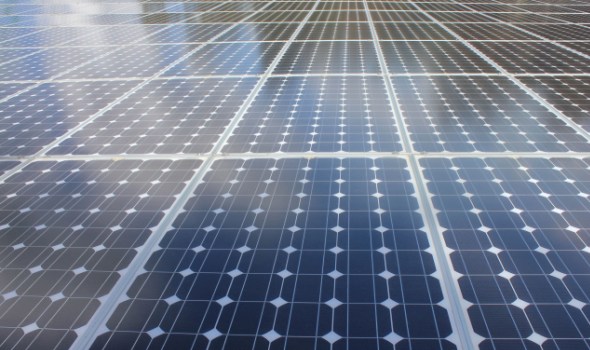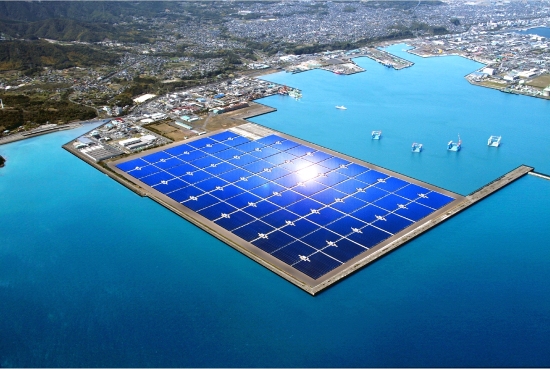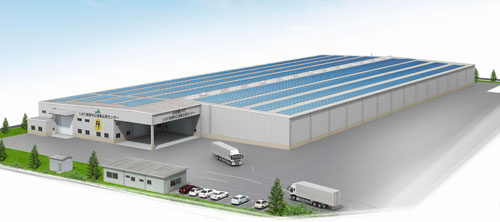Asia’s demand for energy is increasing, and part of this demand could be met by the introduction of large-scale solar projects and plants.
Asia is Green takes a look at Japan, where the move away from nuclear energy after the Great East Japan Earthquake and the Fukushima Daiichi Nuclear Power Plant accident in 2011, would result in more large-scale solar plants replacing her energy needs.
In order to accelerate the supply of solar energy, the Japanese government implemented the revamped feed-in-tariff (FIT) scheme in July 2012, which stipulates that solar installations producing more than 10 kW of energy be subsidised with a feed-in-tariff of 42 yen per kWh for a period of 20 years.
To get a sense of the large-scale solar projects planned and implemented in Japan over the past two years, we focus on Kyocera Corporation, a Japanese company that has supplied solar modules for several large-scale solar power plants and projects in Japan. More power utility companies in Japan have chosen Kyocera than their competitors for the supply of modules for use in their megawatt solar power plants (as of March 2011).
Here’s some of Kyocera’s large-scale solar projects and plants over the past two years:
Kagoshima Mega Solar Power Plant (70 MW)
In partnership with other companies, Kyocera announced in April 2012 the construction of a 70 MW solar power plant in southern Japan, Kagoshima City (Kagoshima Prefecture) to supply power to the local utility company. The planned site of the solar power plant is approximately 1,270,000 m² (roughly the same area as 27 baseball stadiums). The total project cost is estimated at approximately 27 billion yen, with construction to commence in September 2012 and plans for completion by fall of 2013.
The plant would use around 290,000 Kyocera multicrystalline solar modules with a total capacity of 70 MW (which is the largest officially announced solar power plant in Japan at that time). The expected 78,800 MWh of annual electricity generated will provide power for about 22,000 households and offset about 25,000 tons of carbon dioxide emissions per year.
Hokkaido Solar Power Project (30 MW)
Kyocera is providing 30 MW of solar modules (approximately 135,000 units) for a utility-scale solar power plant in the Shiranuka Town, Hokkaido. The project site area is about 625,192 m², with plans for construction to start in October 2012 and operations to start in March 2014.
The solar power plant is expected to generate electricity for about 9,600 households and offset about 11,000 tons of carbon dioxide emissions per year.
Solar Power Project for Agricultural Facilities Across Japan (30 MW)
Kyocera is supplying around 30 MW of solar modules to one of the largest solar power projects in Japan being implemented by the National Federation of Agricultural Cooperative Associations (Zen-Noh) and Mitsubishi Corporation (announced in June 2013). Zen-Noh and Mitsubishi are planning to install a total of 200 MW of solar systems on farmers’ and Zen-Noh Group’s facilities by the end of FY2015.
For the initial phase of the project, the 30 MW solar modules will be installed at about 80 of the Zen-Noh Group’s facilities across the country, such as livestock barns, distribution centers, and parking lots. The project is worth approximately 8.5 billion yen, and would generate about 30,000 MWh of electricity for 8,300 households and result in 10,800 tons of carbon dioxide emissions reduction annually.
SoftBank Izumiotsu Solar Park in Osaka (19.6 MW)
Kyocera announced this month that its subsidiary, Kyocera Solar Corporation, is working with Mitsui on the operation of the SoftBank Izumiotsu Solar Park, a 19.6 MW solar power plant in Osaka. The solar park is expected to start operations in July 2014.
The solar park is about 25 ha and uses approximately 80,000 Kyocera solar modules, which is expected to generate about 20,680 MWh of electricity each year to power 5,700 homes.
Post-Fukushima, Japan is likely to see an increase in the adoption of large-scale solar plants and projects. This is boosted by its local companies, such as Kyocera, which are able to manufacture and supply the solar modules needed on a large-scale basis.
These large-scale solar systems in Japan help to demonstrate the performance and reliability of solar energy, and also serve as examples for other Asian countries to consider tapping on the sun’s potential on a bigger scale.
Source and images credit: Solar panels reflecting the sky by DebbieMous; KYOCERA, IHI, MIZUHO Corporate Bank Reach Basic Agreement to Build & Operate 70MW Solar Power Plant in Japan; KYOCERA Establishes New Company to Operate 70MW Solar Power Plant in Japan; KYOCERA to Supply 30MW of Modules for Solar Power Plant in Northern Japan; KYOCERA to Supply and Construct 30 MW of Solar Power at Agricultural Facilities across Japan; KYOCERA Collaborating with Mitsui and SB Energy to Construct 19.6MW ‘SoftBank Izumiotsu Solar Park’ in Osaka, Japan



